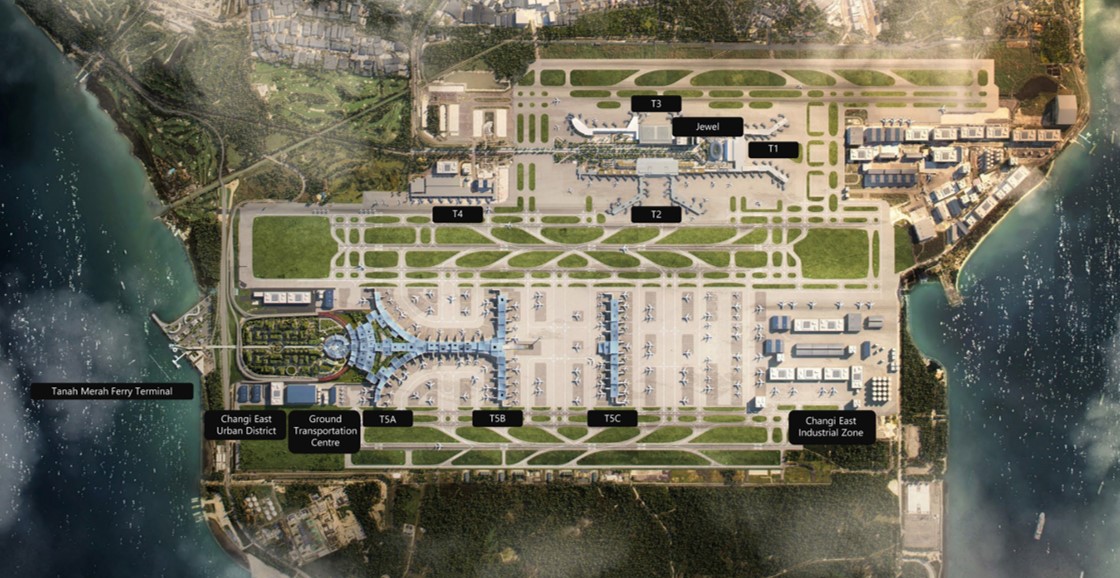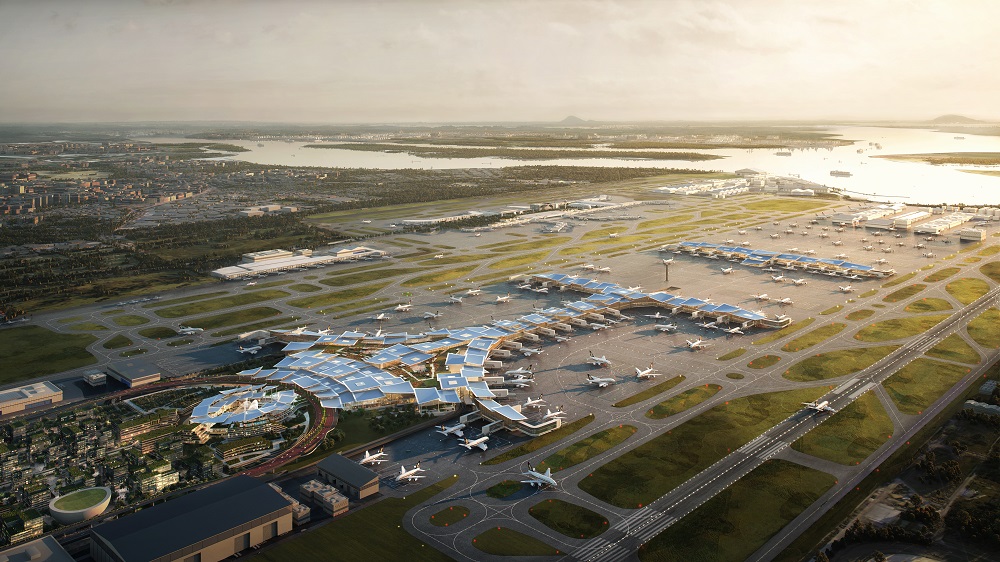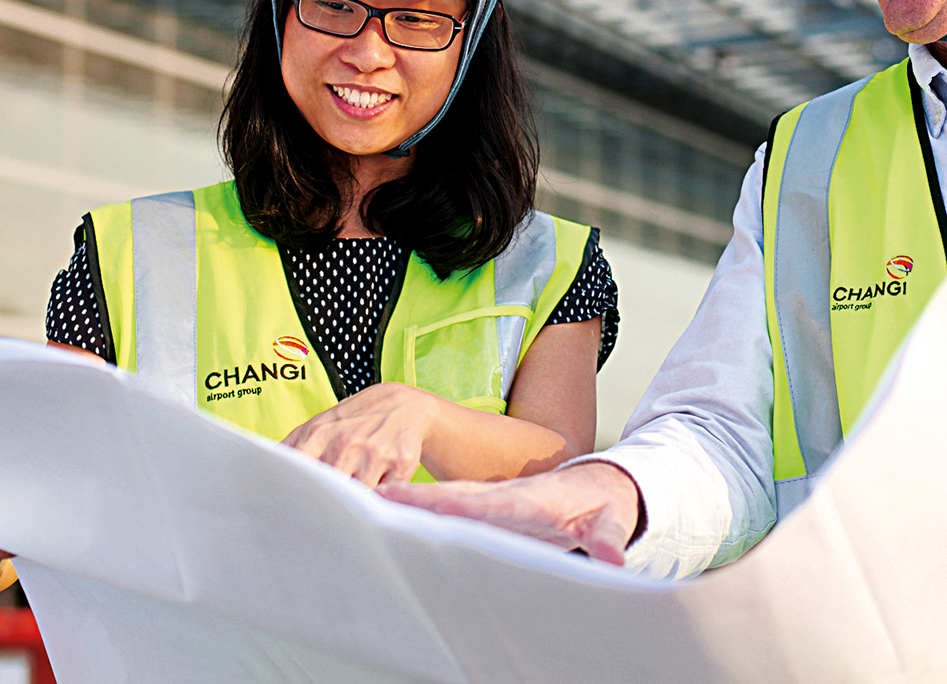


As Changi Airport’s largest expansion project to date, the development includes:
- Changi Airport’s fifth terminal, Terminal 5 (T5)
- A three-runway system
- The construction of tunnels and other underground systems
- Landside and aviation support facilities
- The Changi East Industrial Zone
Spanning a massive 1,080 hectares, the Changi East development will provide future capacity for Changi Airport to ride on the projected growth in air travel. The development will serve to secure Singapore’s air hub status and ensure its continued competitiveness and relevance.
As Changi Airport’s largest expansion project to date, the development includes:
- Changi Airport’s fifth terminal, Terminal 5 (T5)
- A three-runway system
- The construction of tunnels and other underground systems
- Landside and aviation support facilities
- The Changi East Industrial Zone
Fast Facts About Changi East
- Total area of works is equivalent to 667 football fields
- Total pavement length in the development is equivalent to Singapore’s Pan Island Expressway
- Total length of on-site drainage is equivalent to the length of 435 MRT trains
T5 and Supporting Infrastructure
Terminal 5 is a project undertaken by Changi Airport Group, the Civil Aviation Authority of Singapore, and the Ministry of Transport.
T5 will be linked to the other terminals at Changi Airport, allowing the expanded Changi Airport to be operated as a single, integrated airport for ease of transfer between different terminals with airfield operational efficiency. New facilities, such as navigation aids, airfield lighting systems and a fire station will also be constructed.
Three-runway system
The existing third runway, previously used only by the military, has been extended from 2.75km to 4km to handle larger passenger aircraft, and converted for joint military-civilian use.
Under the three-runway programme, almost 40km of new taxiways will also be built to connect the runway with the rest of Changi Airport. This three-runway system is scheduled for operationalisation by the mid-2020s.
Changi East Industrial Zone
Expansion of Cargo Facilites
Changi Airport’s cargo facilities, currently located at the Changi Airfreight Centre, will be expanded to the Changi East Industrial Zone (CEIZ) as part of the Changi East Development.
The zone will be developed for airfreight, air express and Maintenance, Repair and Operations (MRO) activities. Together with the remodelled Changi Airfreight Centre, Changi’s handling capabilities will increase from 3 million tonnes per annum today, to 5.4 million tonnes per annum in its end-state, when the project is completed.
A Smart Air Cargo Hub
The future expanded air cargo hub will be smarter, more connected and more efficient. The use of data and technology with a focus on automation will reduce processing time, and improve productivity and cargo visibility.
Strategic infrastructure planning will ensure greater operational efficiency, with dedicated lanes for autonomous guided vehicles. Direct access to freighter aircraft from cargo and express terminals will also speed up cargo flows.
With environmental and workplace sustainability in mind, the new air cargo hub will feature eco-friendly handling equipment, convenient amenities and a land transport network for staff.
The above information is accurate as of August 2022.
Terminal 5



Terminal 5 (T5) will be located within the 1,080-hectare Changi East development, and will be able to handle about 50 million passenger movements per year. T5 will be designed with the flexibility to be built in two phases, in line with traffic growth, and is expected to be operational around the mid-2030s. It will secure Singapore’s capacity to ride on the long-term growth of aviation, strengthening Changi Airport’s position as a premier air hub for the region and beyond, and ensuring that future generations of Singaporeans can continue to benefit from Changi’s global connectivity.
T5 will reinforce Changi Airport’s status as a national icon and ensure that the airport will continue to be a place of shared experiences across generations of Singaporeans, where precious memories are forged with friends and family.
Drawing on lessons learnt from the Covid-19 pandemic, T5 has been designed with the flexibility to operate as smaller sub-terminals when needed. Specialised provisions to reduce the transmission of diseases will also be deployed in T5, including contactless systems at passenger touchpoints and enhanced ventilation systems.



A SUSTAINABLE TERMINAL
T5 will be a Green Mark Platinum Super Low Energy Building, as certified by the Building and Construction Authority. To reduce its carbon footprint, solar panels; smart building management systems; and district cooling combined with thermal energy storage will be deployed. T5 will also be ready for environmentally friendly solutions such as providing fixed ground power and cooling, as well as viable alternative fuels including the use of Sustainable Aviation Fuel for aircraft.
A TECHNOLOGICALLY DRIVEN TERMINAL
T5 will be designed to accommodate and facilitate the deployment of technology, such as autonomous vehicles and baggage handling robots, to automate and digitalise airport operations, to enhance the passenger experience and increase manpower productivity. This will provide local enterprises with an opportunity to build capabilities in new, emerging areas such as robotics and artificial intelligence, and ultimately create quality jobs for Singaporeans within the airport ecosystem.
For more information about T5, please refer to CAG’s factsheet.
Watch Singapore Prime Minister Lee Hsien Loong share about T5 in his 2022 National Day Rally.
DEVELOPMENT MILESTONES
2013 - The Changi 2036 Steering Committee, which was established to develop a holistic long-term plan for the expansion of Changi Airport, announces its recommendations to construct Terminal 5 (T5) and implement a three-runway system at Changi.
2014 - Land preparation works for Changi East and planning for T5 begin, including functional design studies and concept development for the terminal.
2015 - CAG launches the first of several packages of works to put in place the three-runway system. The works include pavement works, drainage works, security fencing and perimeter roads, mechanical and electrical works, as well as supporting works, such as major services and road diversions.
2018 - CAG announces the appointment of the Master Building Consultants (MBC), to provide architectural design and engineering consultancy services for the development of T5. The Master Civil Consultants (MCC) are also appointed, to provide consultancy services for the design of infrastructure at the landside and airside areas outside of the T5 buildings.
2020 - A two-year pause of the T5 project is announced, due to the Covid-19 pandemic. The aim is to assess the impact of Covid-19 on aviation growth, learn from the pandemic experience, and review T5’s design to meet the needs of post-pandemic travel.
2022 - The resumption of work on the T5 project is announced. MOT, CAAS and CAG have taken the opportunity of the two-year pause to comprehensively review the T5 design to make it more modular, resilient and sustainable. Construction of T5 will commence in about two years for T5 to meet the anticipated demand for air travel around the mid-2030s.
Frequently Asked Questions
The Changi East development is Changi Airport’s largest development to date, and consists of various programmes. This includes Changi Airport’s Terminal 5, a three-runway system, the construction of tunnels and other underground systems, landside and aviation support, as well as the Changi East Industrial Zone. The Changi East development will ensure that Changi Airport is ready to handle future growth in air travel and the Singapore air hub can continue to contribute to the country’s long-term economic development.
Changi Airport's T5 is one of the key programmes under the Changi East development. The terminal will enable Changi Airport to safely and effectively handle the projected large volumes of air traffic in the medium-to long-term and will be ready to meet the anticipated demand around the mid-2030s.
The new facilities will enable Changi Airport to be operated as a single, integrated airport across terminals, and offer a more seamless travel experience.
Works at Changi East are progressively taking place, with different completion dates for its various programmes. The three-runway system will be among the first of the Changi East development works to be completed and it is expected to be operationalised in the mid-2020s. The three-runway system will reduce congestion in the airside, allowing for more flight movements in a safe and efficient manner.
Funding for Changi East will come from three parties—the Singapore Government, Changi Airport Group (CAG) and airport users (including airlines and passengers).





